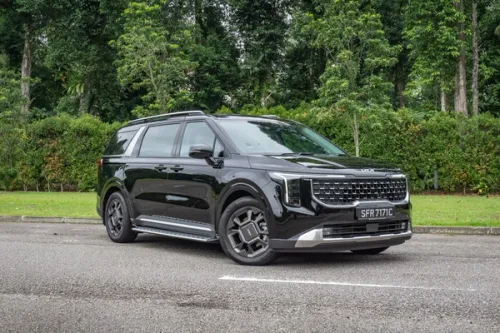Mark VII Golf Breaks New Ground
Seventh-generation golf is bigger, faster and more efficient thanks to a raft of new innovations.


36 years and 29 million units later, the seventh generation Volkswagen Golf continues to bring class leading innovation and performance to the small family hatchback class.
Built upon a MQB (Modularer Querbaukasten) platform or Modular Transverse Matrix, the new Mark VII Golf brings a new standard to its class, allowing for access to new powertrains and technologies (in safety and infotainment), features previously found in vehicles in higher, premium, segments.
Despite being built bigger (59 mm longer wheelbase), the new Golf is almost 100kg lighter, stronger, and 23 percent more efficient than before, thanks to new production techniques. A longer wheelbase with extended height width and length now offers more head and leg room for passengers. Luggage space has also been increased by 30 litres from 350 to 380 litres.
On the inside, drivers will benefit from improved ergonomics with Volkswagen’s new generation of touch screen information systems as standard.
Significantly, the new Golf will feature an array of class leading safety and electronic innovations.
A multi-collision brake system; which automatically brakes the vehicle after a collision, to reduce kinetic energy significantly and thus minimise the chance of a second impact is equipped as standard. Also standard is the PreCrash system found on the on the Touareg. If it detects the possibility of an accident, it pre-tensions seatbelts and closes the windows and sunroof, leaving just a small gap, to ensure the best possible protection from the airbags.
Other electronic aids include Adaptive Cruise Control; Front Assist, which can bring the vehicle to a complete stop and operates at speeds of up to 150 km/h; and City Emergency Braking, which operates at up to 30 km/h. Driver Alert System, as introduced on the Passat, monitors the driver’s inputs, to detect any signs of tiredness; while a camera-operated Lane Assist system can help keep the car in a specific lane, providing countersteering assistance where necessary. A Dynamic Light Assist system optionally masks the vehicle’s high beam lighting, making for brilliant illumination without dazzling on-coming traffic.
And for the first time, the Golf will be available with driver profile selection with a choice of Eco, Sport, Normal and Individual modes. Cars with the DSG gearbox a fifth option – Comfort – is also offered.
Powering the Golf is a new range of petrol and diesel engines, all of which incorporate Stop/Start and battery regeneration systems. At launch, the petrol engines are a 1.2-litre TSI 85 PS unit returning 4.9 l/100 km and 113 g/km), and a 1.4-litre TSI 140 PS unit with Active Cylinder Technology, which can deactivate two of the cylinders, and achieves up to 4.8 l/100 km and 112 g/km).
Credits: JonathanTan

- Convenient and Hassle-Free
- Consumer Protection
Transparent Process
With No Obligation


Get the Best Price for your used car
from 500+ dealers in 24 hours








